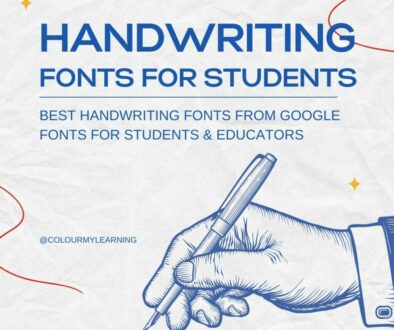Effective Assessment Strategies: How to use formative and summative assessments to ensure your students are achieving their learning goals
One of the main roles a facilitator needs to perform is to monitor learner progress throughout the course. They will have to gather evidence to assess whether or not a student meets the criteria or standards to pass, or whether they have achieved the learning outcomes as communicated at the outset of the training.
Assessment Standards
Depending on the nature of the subject being taught, standards might include the following:
1. Foundational Competence.
Learners will have to demonstrate an understanding of the basics of any subject, knowledge of which is necessary to be able to build on. A facilitator can also use evidence of this theoretical know-how to establish whether the learner meets the pre-requisites for course admission. For example, numeracy and literacy skills are a key requirement to most learning interventions where an facilitator conducts an entrance test to identify knowledge gaps.
The facilitator and institution needs to be willing to provide the opportunity for students to take a bridging course to address gaps where they have identified the student is lacking so that even though they have to take remedial action, they still have access to further learning.
2. Practical competence.
After having been introduced to new information, the candidate will have to demonstrate the ability to perform a set of tasks and actions in an authentic context. This competence level applies especially to outcomes-based training where the facilitator assesses learners against their ability to apply what they have learnt in a real-life scenario.
For example, in a ‘train the trainer’ course, facilitator will need to give learners the opportunity to train the rest of the class in an area they are competent in as part of the course so that the facilitator can correct them where necessary as well as at the end of course to make a final assessment decision.
3. Reflexive Competence.
In this case the student will had to show that they’re able to integrate their knowledge with performance so that they’re able to adapt what they’ve learnt to changed circumstances. For example, after having learnt elemental mathematics and then being able to apply formulas to work out equations, the reflective competence level requires that the student is able to use the formula to suit a different condition, to a situation which is more relevant to everyday life.

Assessment Categories
Formative and summative assessments should comprise of a multifaceted approach where the candidate’s competency depends on their ability to demonstrate their theoretical understanding, their practical application thereof and whether they’re able to adapt that knowledge and application to various scenarios.
1. Formative assessments
During the training intervention, the facilitator will conduct a formative assessment to determine whether learners are grasping the new concepts being introduced and proceed accordingly.
It focuses on assessing whether or not the learner is effectively keeping up with the demands of the lesson and allows the facilitator to adjust elements such as difficulty level and pace of the training programme.
Conducting formative assessments gives the facilitator the chance to do the following:
- Provide feedback to the learner on their progress
- Make provision for additional time where needed
- Determine readiness for summative assessment
- Decide if learners need more formative assessments to create additional learning opportunities
2. Summative assessments
At the end of a learning programme, the facilitator usually conducts a summative assessment to test the candidate’s understanding of the key outcomes of the learning programme.
It allows the facilitator to be able to:
- Make a judgement about the learner’s achievement, that is, whether they are competent or not yet competent
- Give credit (or not) for the learner result, record and report the credits on the learner management system so that administrators can process their certificate
Communication and transparency is imperative throughout the process where the learner knows what is expected of them and what criteria they have to meet to gain credits associated with the course.

Assessment instruments and the advantages and disadvantages of each
What form your formative and summative assessment takes depends on whether you’re training soft or hard skills. Hard skills are easy to measure where knowledge learnt from training material and instruction translate to a specific outcome. For example, a short course on how be a health and safety representative on a construction site or a forklift operator in a warehouse.
To qualify in hard skills, a learner would have to demonstrate theoretical understanding and how they might put that into practice in the form of a written assessment, report or case study.
Soft skills on the other hand are more abstract in nature where the end result is acquiring personal and interpersonal skills. For example, time management, communication and leadership. They do not necessarily qualify you to do a particular job but will help you successfully navigate the world of work.
To provide evidence that a learner has acquired soft skills instead, the learner would have to illustrate that they’re able to apply what they’ve learnt in a self-assessment, videotaped performance or observation, for example.
There are benefits and challenges for each of the different forms of assessment and a facilitator should consider these when designing assessments.
Written.
This form of assessment is cost- and time- effective because it is typically conducted in a big group. On the downside however, is that learners need to have good literacy skills to interpret questions correctly and be able to communicate their answer clearly.
Reports.
Report writing is beneficial where a learner has to summarise all that they have learnt and demonstrate their understanding of the key learning outcomes. This method of gathering evidence of competence however is time consuming
Case studies.
This assessment form is where a scenario is created and the candidate has to put into practice what they have learnt in the classroom. The advantage of using this assessment type is that learners are not simply required to recall new knowledge but have to think beyond what they have learnt.
For example, in an incident investigation course, the assessment could require a candidate to apply the same procedure to different scenarios.
The challenge here is that the exercise may might not accurately reflect real working conditions.
Self-assessment.
This assessment type is subjective and a facilitator should only use it as a formative assessment where the learner is required to evaluate their own level of understanding of the course content.

This exercise is useful for the facilitator who can then use this information to expand on a topic where necessary or move on with the lesson. The difficulty of this assignment type is that the candidate may under or over rate themselves so the facilitator will have to incorporate their own observations when deciding the next course of action.
Videotaped performance.
This assessment is beneficial because the learner needs to demonstrate the practical application of skills learnt. For example, in a ‘presentation skills’ course, the learner will have to display their ability on tape which can form part of their Portfolio Of Evidence to process their qualification. The challenge with this however is that it usually takes a lot of preparation time.
Observation.
For a course such as ‘evacuation warden’, the facilitator could ask that the learners conduct a role play of what they would do in case of an emergency. The facilitator will need to have a checklist against which they can assess learner performance during the activity. The disadvantage of this is that candidates may act differently than they would in a real-life scenario because the facilitator is watching them.
We have seen that achieving learner goals depends on there being set standards against which assessments can be set. We have also looked at the difference between formative and summative assessments and how it’s essential that a facilitator monitor learner progress throughout their training intervention to adapt where necessary.
Lastly, we delved into the different assessment types at a facilitator’s disposal based on what their subject matter is and the advantages and disadvantages of each where, a facilitator may also choose to use a range of assessments for more accurate results.










